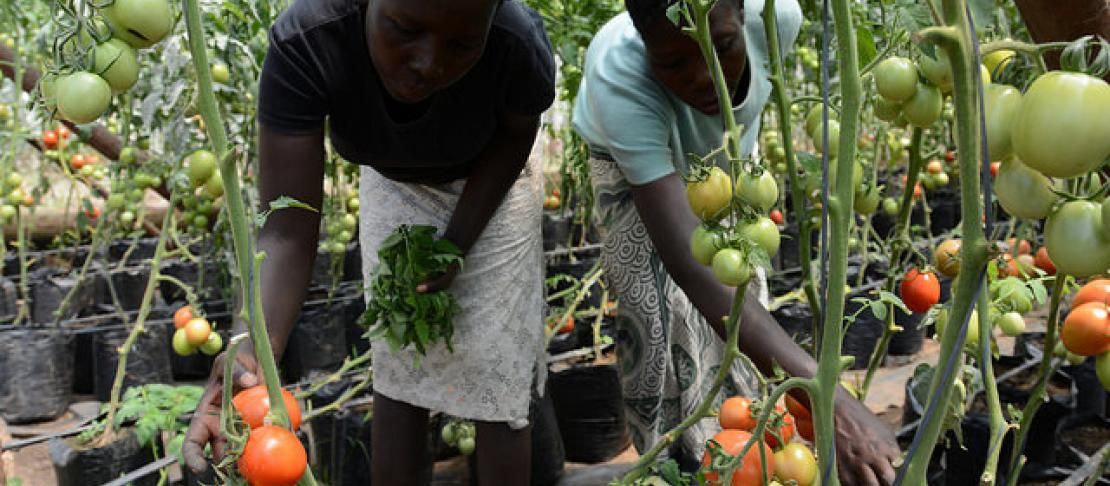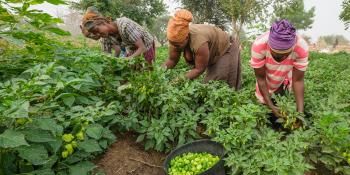Gender, power and climate information in Nyando, Kenya

As part of a gender-focused project across multiple sites in Kenya and Senegal, new research looks at the sources of information regarding climate-smart practices in communities in Nyando, and the relationship between climate change adaptation, empowerment and food security in the region.
A recent study conducted in the Nyando region of Kenya looks at the gender dynamics of climate change adaptation, and what that means for food security among Luo and Kalenjin communities.
If you want to know more about research on closing the gender gap in farming under climate change:
- read our special blog series on Closing the gender gap
- watch the presentations and the panel discussion from the Closing the gender gap event
- follow the #AgGenderGap event hashtag on twitter
The Luo and Kalenjin villages inhabit the border between the Nyanza and Rift Valley Provinces, at times in tension with one another but both experiencing the effects of climate change on their agricultural activities.
Preliminary results from this study indicate that, although these villages neighbor one another, their experiences of climate change – and respective adaptive capacities to deal with its effects on their farms – vary significantly. They thus present an interesting case study of the role that ethnicity and the accompanying gender dynamics plays in the adoption of climate adaptation strategies.
Climate variability and change across communities
Developed by the University of Florida with the support of the CGIAR Research Program on Climate Change, Agriculture and Food Security (CCAFS) Theme on Climate Risk Management, this study replicated focus groups and intra-household surveys across Wote and Nyando in Kenya and in two communities in Kaffrine, Senegal. In Kenya, both male and female members of both communities are aware of the changes in climate, and many have taken steps to adapt their agricultural activities to maintain food security for their households.
Yet for each community, climate adaptation is defined by the unique needs, priorities, and challenges of its members and the region that they live in. So while some in Wote are eager to implement irrigation systems on their farms should they secure improved access to water, other farmers in Kaffrine consider irrigation and water ditches to be “very bad” due to their potential for creating damaging water ravines during the strong rains.
In Nyando, the Luo region tends to be drier and suffer greater lack of rain and seasonal rainfall variability. The rivers in this region often run dry, requiring farmers to walk long distances for water. Land size averages around one acre. There is one main planting season and many farmers have reported poor crop yields in recent years. The Kalenjin region however, tends to be wetter, with better access to water, two cropping seasons, and larger property sizes – around 5-10 acres on average. They also have more livestock – both traditional and improved – and are more dependent on their livestock for income than their crop production.

A luo woman poses with maize she has intercropped with groundnuts. Photo: Taryn Devereux.
The role of gender
Among the Luo households surveyed for this study, over half were headed by a widowed woman; many others reported having lost husbands and adult sons in recent years, and the average household size was 2.5 members. Conversely, the surveyed Kalenjin families were larger, with an average of 5 members per household. In both communities, all married women identified their husband as the head of household.
These household demographics shape how decisions are made and labor is divided, and therefore also how information reaches the household. Although many households in both the Luo and Kalenjin communities receive climate and weather information every season (if not every week or even day), the household specific demographics present challenges for certain women.
Those in or leading a single, female-headed household might not have the time or resources to join community groups or purchase an instrumental means to receive information (e.g. a radio or mobile phone). Women in larger families headed by a man might be entirely dependent on their husbands for information, who is likely more socially involved in the community. In the surveyed Kalenjin village, all male respondents – single and partnered – worked with some type of community or regional organization. Yet with the exception of the wife of the Local Chief, none of the surveyed female respondents were affiliated with any local groups.
For men and women in both the Luo and Kalenjin communities the most common response to how climate information could be more useful to them was for it to be accompanied with more technical advice or training. Others expressed that, even with the information and advice, they lacked the resources to put any meaningful changes into place on their farm.
Does climate information matter?
Moreover, for the Luo community, some felt that the information currently being provided was not relevant or provided at a scale that was meaningful to their agricultural activities; e.g. daily and seasonal weather forecasts describe the Kisumu region of Nyando and not the more remote regions where they are farming.
Others from the Kalenjin village were more concerned with the method of communication, expressing that they would like the meteorological services to work more directly with local organizations and/or village elders, and even use SMS instant messaging to provide weather forecasting information.
This study builds upon the recently conducted gender-focused research developed by Joash Mango (CCAFS) and Edith Ampaire (CIAT). The report, due out later in 2014, examines the sources of information regarding climate-smart agriculture, and what that means for gender empowerment and food security in the different regions.
Read more about CCAFS' climate information services and gender work:
BLOG: Is gender being considered within climate services?
BLOG: Creating participatory gender and climate change research tools together
BLOG: Unleasing the potential of rural women as active agents of change
Taryn Devereux is a project coordinator at the International Center, University of Florida.
Dr. Sarah L. McKune is an assistant professor of Epidemiology and the Director of Public Health Programs for the College of Public Health and Health Professions at the University of Florida.



